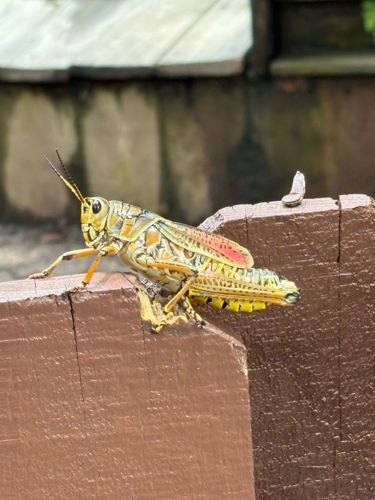American Bird Grasshopper
Scientific Name: Schistocerca americana
Order & Family: Orthoptera, Acrididae
Size: Males 30-45 mm (1.2-1.8 inches), Females 40-55 mm (1.6-2.2 inches)

Natural Habitat
Open fields, grasslands, cultivated areas, gardens, and sometimes suburban landscapes throughout the southeastern United States and parts of Central and South America.
Diet & Feeding
Herbivorous; primarily feeds on a wide variety of plants, including grasses, broadleaf weeds, and cultivated crops such as corn, cotton, and vegetables.
Behavior Patterns
Solitary for most of their life cycle, though they can reach high densities and cause significant crop damage. They are strong flyers and can migrate over considerable distances. Females lay eggs in the soil, and nymphs undergo several molts before reaching adulthood.
Risks & Benefits
Potential risks include being a significant agricultural pest due to its voracious feeding habits, leading to crop damage and economic losses. Benefits include serving as a food source for various predators (birds, reptiles, other insects) and contributing to nutrient cycling in ecosystems.
Identified on: 9/6/2025